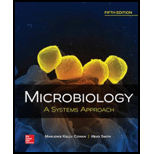
Concept explainers
To describe:
Hepatitis B infections caused by a needlestick during a dental procedure by using the terms given in question, also determine the mode of transmission of the following disease.
Introduction:
Hepatitis B is a disease of liver which is caused by infection of virus. The virus responsible for hepatitis B is HBV (hepatitis B virus) and it belongs to Hepadnaviridae family of viruses.
To describe:
Pneumocystis pneumonia in an AIDS patient and also determine the mode of transmission of the following disease.
Introduction:
HIV is human immunodeficiency virus which causes a very serious disease called AIDS (acquired immunodeficiency syndrome). HIV interferes with the immune cells of the body and reduces the ability to fight infections.
To describe:
Bubonic plague that is acquired through the bite of a rat flea, and also determine the mode of transmission.
Introduction:
Bubonic plague is a type of bacterial infection caused by bacterium Yersinia pestis. This plague may have deadly effects. It can be spread from the bite of an infected rodent or flea. The plague is characterized by symptoms like fever, headache, swollen and painful lesions, and vomiting.
To determine:
Hantavirus pulmonary syndrome infection acquired while vacationing in a log cabin.
Introduction:
Hantavirus pulmonary syndrome is a viral infection which develops its symptoms within a week. It is a fatal, respiratory disease that occurs in human by infection caused by hantaviruses.
To describe:
The disease salmonellosis and also determine the mode of transmission.
Introduction:
Salmonellosis is a type of bacterial infection caused by the strain of Salmonella bacterium. This bacterium mainly transmitted to humans through contaminated food or water. The infection results in typhoid fever and sometimes it causes severe deadly disease.
To describe:
The undiagnosed chlamydiosis and also determine the mode of transmission of the disease.
Introduction:
Chlamydiosis is a common sexually transmitted disease. It is caused by the bacteria called Chlamydia trachomatis. It can infect both men and women. Chlamydia doesn’t usually cause any symptoms.
To describe:
The disease mononucleosis that is transmitted via a shared drinking glass.
Introduction:
Respiratory droplet and saliva is the exit route for several viruses, including those of mumps, rabies, and infectious mononucleosis. Mononucleosis includes a viral disease caused by Epstein-Barr virus.
To describe:
The disease neonatal gonorrhea and also determine the mode of transmission of this disease.
Introduction:
Gonorrhea is a sexually transmitted disease which causes infection in the reproductive part of females. This infection can also pass to the newborns known as neonatal gonorrhea.
Want to see the full answer?
Check out a sample textbook solution
Chapter 13 Solutions
Microbiology: A Systems Approach
- Describe the principle of homeostasis.arrow_forwardExplain how the hormones of the glands listed below travel around the body to target organs and tissues : Pituitary gland Hypothalamus Thyroid Parathyroid Adrenal Pineal Pancreas(islets of langerhans) Gonads (testes and ovaries) Placentaarrow_forwardWhat are the functions of the hormones produced in the glands listed below: Pituitary gland Hypothalamus Thyroid Parathyroid Adrenal Pineal Pancreas(islets of langerhans) Gonads (testes and ovaries) Placentaarrow_forward
- Describe the hormones produced in the glands listed below: Pituitary gland Hypothalamus Thyroid Parathyroid Adrenal Pineal Pancreas(islets of langerhans) Gonads (testes and ovaries) Placentaarrow_forwardPlease help me calculate drug dosage from the following information: Patient weight: 35 pounds, so 15.9 kilograms (got this by dividing 35 pounds by 2.2 kilograms) Drug dose: 0.05mg/kg Drug concentration: 2mg/mLarrow_forwardA 25-year-old woman presents to the emergency department with a 2-day history of fever, chills, severe headache, and confusion. She recently returned from a trip to sub-Saharan Africa, where she did not take malaria prophylaxis. On examination, she is febrile (39.8°C/103.6°F) and hypotensive. Laboratory studies reveal hemoglobin of 8.0 g/dL, platelet count of 50,000/μL, and evidence of hemoglobinuria. A peripheral blood smear shows ring forms and banana-shaped gametocytes. Which of the following Plasmodium species is most likely responsible for her severe symptoms? A. Plasmodium vivax B. Plasmodium ovale C. Plasmodium malariae D. Plasmodium falciparumarrow_forward
- please fill in missing parts , thank youarrow_forwardplease draw in the answers, thank youarrow_forwarda. On this first grid, assume that the DNA and RNA templates are read left to right. DNA DNA mRNA codon tRNA anticodon polypeptide _strand strand C с A T G A U G C A TRP b. Now do this AGAIN assuming that the DNA and RNA templates are read right to left. DNA DNA strand strand C mRNA codon tRNA anticodon polypeptide 0 A T G A U G с A TRParrow_forward
 Comprehensive Medical Assisting: Administrative a...NursingISBN:9781305964792Author:Wilburta Q. Lindh, Carol D. Tamparo, Barbara M. Dahl, Julie Morris, Cindy CorreaPublisher:Cengage LearningHealth Safety And Nutrition F/Young ChildHealth & NutritionISBN:9781305144767Author:MAROTZPublisher:Cengage
Comprehensive Medical Assisting: Administrative a...NursingISBN:9781305964792Author:Wilburta Q. Lindh, Carol D. Tamparo, Barbara M. Dahl, Julie Morris, Cindy CorreaPublisher:Cengage LearningHealth Safety And Nutrition F/Young ChildHealth & NutritionISBN:9781305144767Author:MAROTZPublisher:Cengage- Surgical Tech For Surgical Tech Pos CareHealth & NutritionISBN:9781337648868Author:AssociationPublisher:Cengage





